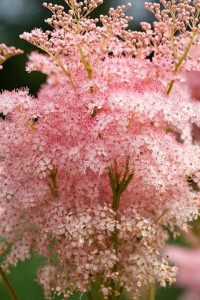 Someday I will write a garden book and the title will be My Garden in Twenty-Five Mistakes. Each chapter will detail one of my particularly egregious garden mistakes and the steps I took to rectify it. My book will be the perfect antidote to all those garden books that detail how the garden owner inherited or bought a neglected trash pit and turned it into a garden worthy of a coffee table volume. I love garden pornography as much as the next person, but I think regular dirt gardeners will identify more readily with a catalog of mistakes.
Someday I will write a garden book and the title will be My Garden in Twenty-Five Mistakes. Each chapter will detail one of my particularly egregious garden mistakes and the steps I took to rectify it. My book will be the perfect antidote to all those garden books that detail how the garden owner inherited or bought a neglected trash pit and turned it into a garden worthy of a coffee table volume. I love garden pornography as much as the next person, but I think regular dirt gardeners will identify more readily with a catalog of mistakes.
My most recent garden error involved perennial meadowsweet–Filipendula vulgaris–a tough plant with a lovely name. Last year about this time, I saw a nice one in a garden center and snapped it up. I picked out a location and had every intention of planting it long before the first frost. Then other preoccupations intervened. The meadowsweet somehow got to the back of my holding area, where it received water, but scant attention. Frost came before I could plant it, so I put the pot in a protected spot in the hopes of the meadowsweet surviving the winter. It not only survived, but thrived, and when the weather warmed up in spring, it sprouted a gorgeous crop of young leaves. I put it in a semi-shaded area on my back porch and indulged in the annual spring plant buying frenzy. My daughter went about her usual business of filling the edges of the back porch with an ever-expanding collection of potted tropical plants. The cannas, ginger lily and elephant ears slowly but surely edged out the meadowsweet. Somewhere along the way the pot tipped over and the plant was unable to absorb water. When I finally discovered the tipped-over meadowsweet it looked dead.
I decided that I needed to believe in miracles, so I righted the pot and watered it copiously. After about a week, as I was ready to throw the whole thing out, I noticed that some of the seemingly dead stems were sprouting new green leaves. Resurrection was at hand. I will keep the meadowsweet in intensive care for a few more days, with plenty of water, but when it is out of danger and a bit leafier, it will finally go out in the garden.
What kind of plant is so tenacious that it provides second chances to neglectful gardeners? A truly admirable one. One of the common names for the North American native rubra species is “Queen of the Prairie”, and it is not the only filipendula with decidedly regal properties. Those properties start with the branched, upright habit, which makes for a lush appearance when the plants are in bloom. The range of flower colors is not enormous, running from white through a range of pinks to near-purple. The rubra species, which generally boasts pink or pink-purple flowers, can rise to eight feet tall and four feet wide, with plume-like flowerheads composed of hundreds of tiny blooms. Though filipendula is a member of the rose family, the flowerheads will remind you a little of astilbes, with the same loose, fluffy quality.
Filipendula vulgaris, a native of Europe, north and central Asia, is sometimes known by the decidedly more prosaic name, “dropwort” is not nearly as tall, coming in at three feet tall and half as wide, with opulent white flowerheads. Likewise, Filipendula purpurea, from Japan and sometimes known as “Japanese meadowsweet”, grows two feet tall and wide.
Clearly, there are filipendulas that are at home in the very back of a large border, as well as those better suited to the middle of more moderate size beds. Some of the smaller meadowsweets can also thrive in well-watered containers.
In general, filipendula foliage is deeply dissected. Purpurea and rubra leaves are palmate and somewhat maple-like. Vulgaris leaves are slender and reminiscent of ferns.
My garden could use some plumes, which is why I bought the tenacious filipendula in the first place. It is a specimen of ‘Flore Plena’, sometimes known as ‘Multiplex’, which boasts double white flowers touched with pale pink. The double blossoms make the plumes even more lush than those of other meadowsweets.
If you like tall plumes, try Filipendula rubra ‘Venusta’, with salmon-pink flowers, or ‘Venusta Alba’, with white blooms. Both grow four to five feet tall and two feet wide, with dramatic dark stems.
Meadowsweeets contribute handsomely to informal gardens, especially those influenced by the “New American Perennial” movement, replete with grasses and other prairie plants like echinacea. They also make great cut flowers and bouquet fillers.
The vulgaris varieties thrive on abundant moisture and will even succeed well in rain gardens. Other meadow sweets can take drier conditions. All flourish in full sun to light shade, requiring little else to succeed and increase.
Fall is a great time to plant perennials and filipendula is no exception. For a good selection, go to Digging Dog Nursery, 31101 Middle Ridge Road, Albion, CA 95410; (707) 937-1235; free print catalog.
